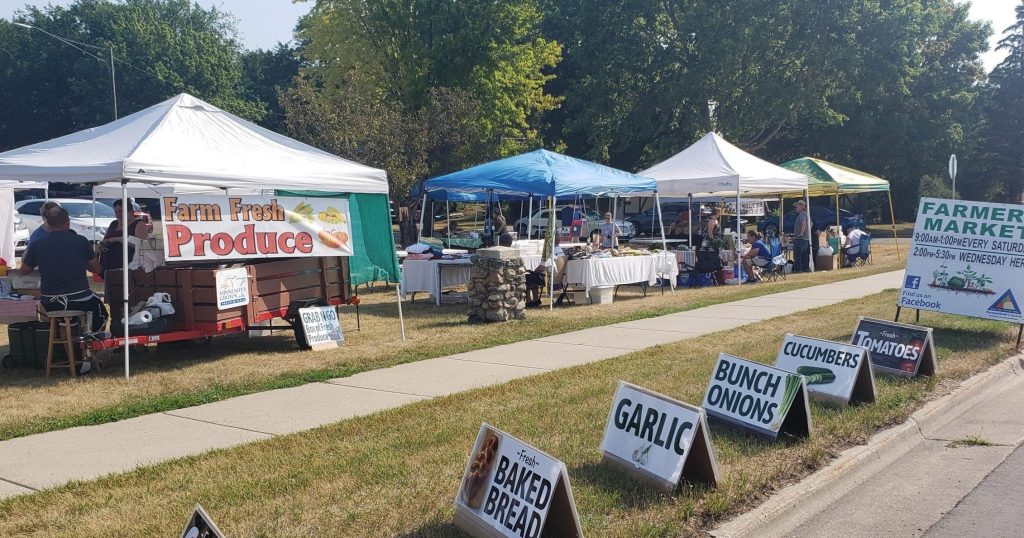people throughout the U.S. are using the Sustainable enchancment targets as a highway map to assemble again elevated by turning these worldwide ambitions into native movement.
inside the Midwest, which means investing in group-primarily based options that tackle the distinctive challenges dealing with rural areas. To be taught extra about what this appears like, I spoke with Anna Wasescha of West Central Initiative in Minnesota about sustainable agriculture, pandemic restoration, and welcoming newcomers to small metropolis America.
Tony Pipa: Let’s start by talking about your group, a quantity of the hallmarks of the communities that you merely serve, and a quantity of the challenges they’re dealing with as effectively.
Anna Wasescha: In our space, the financial system is usually agriculture, recreation, and tourism as a end result of we have so many lakes. Minnesota is understood as a end result of the Land of 10,000 Lakes, and the county I stay in has over a thousand lakes by itself. when you fly over it and also you look down, it appears choose it’s extra water than land. It’s pretty excellent.
So all of these issues — agriculture, recreation, the outdoors — are immediately associated to the Sustainable enchancment targets. these are chief belongings that we have to shield into the prolonged time period.
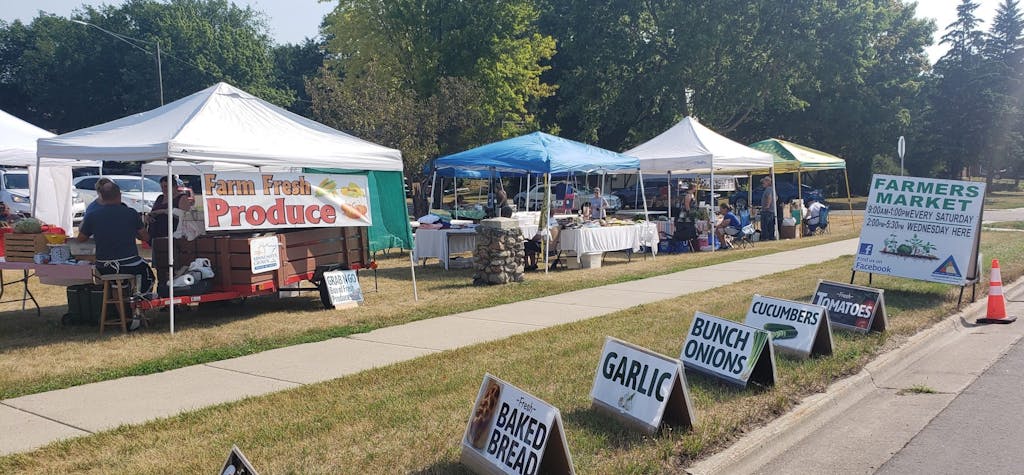
i would say a quantity of the challenges want to do with the viability of communities with populations underneath a thousand these who will lack the greater school districts, hospitals, retail, and industrial industries that draw people to them. There’s a method that we’re remoted from metropolis areas, presumably appeared down upon, so there’s an inferiority superior.
on the identical time, we have a terribly sturdy sense of independence and power, that what we contribute to the financial system general is essential to American life. We feed the world, so to converse. There’s a lot of pleasure in that id. however whereas agriculture was as quickly as very labor-intensive, now it’s not, so the inhabitants in rural areas is declining whilst agricultural output will enhance. That’s a contradiction, however that’s the biggest method it’s working. So people in rural areas like ours want to get your hands on new roles and new identities all by the financial system.
West Central Initiative in Minnesota was created by the McKnight basis inside the Eighties following super monetary loss attributable to farming bankruptcies and a timber and mining disaster. the thought was to create six regional foundations on the underside nearer to communities to assist them recuperate. We serve 9 counties, and a portion of the White Earth Nation, a local American group, additionally lies inside thought of one of our counties. we current grants and loans to native nonprofit organizations and likewise maintain convenings to convey completely different teams collectively and alter the dialog.
TP: So from that place, how did you first flip into involved with the Sustainable enchancment targets? What launched you to this critical about sustainable enchancment, and the method are you making use of this set of world targets to your work and your area?
AW: i would like to underscore the affect of issues that occurred inside the final 12 months. One was the worldwide pandemic. It’s as if we had been all in a state of heightened consciousness as effectively as to nervousness that goes with quarantining and the dying toll mounting day after day after day.
i assume one factor that we actually found, which is reassuring, is that the Sustainable enchancment targets are common; they act like connective tissue. regardless of the place you’re from, all of us understand that poverty should be eradicated, that accountable manufacturing and consumption issues, that defending life underwater is important.
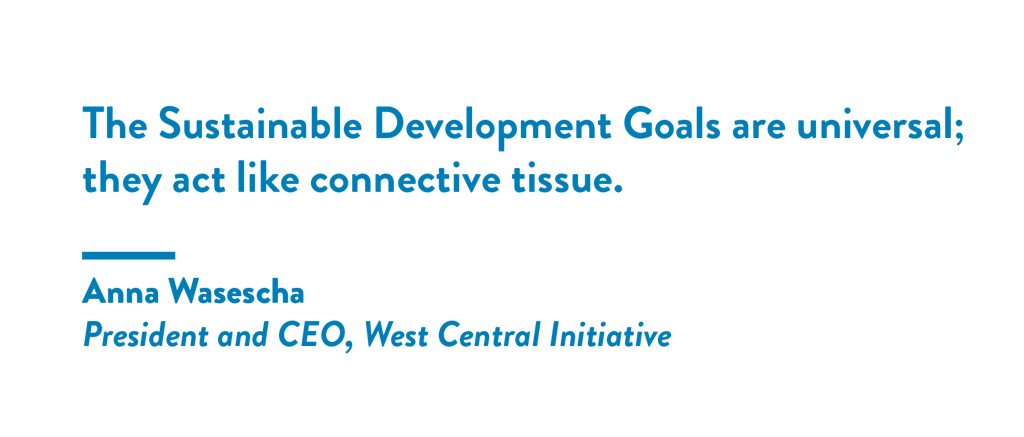
right here’s one other one: The housing disaster, proper? particularly now, as a end result of of this of financial pressures created by COVID-19, homes don’t appraise at a extreme ample worth for people to borrow the money they should buy them on the market price. the worth of constructing new housing is elevated than ever, and the current of current housing can’t meet the demand. That’s one factor i assume people in rural areas agree on, it would not matter what your political school of thought may even be. people understand you’ve acquired to eat, you’ve acquired to have a roof over your head — these are the Sustainable enchancment targets in a nutshell.
So the Sustainable enchancment targets gave us one factor to agree about all by a interval of political and social turmoil attributable to these large moments in our historic previous on this nation and world large.
For West Central Initiative particularly, the Sustainable enchancment targets assist us hyperlink the group planning work we do with our philanthropy. for event, to deal with the rapid COVID-19 wants of our area, we launched the Resiliency Fund which provided grants aligned with the SDGs to elevated than eighty organizations in our communities. We additionally launched on an undergraduate scholar who mapped the SDG alignment of 600 nonprofits in our space on the SDG movement map and we’re additionally creating an interactive SDG dashboard, constructing on the work of Hawaii and the Aloha+ Dashboard.
TP: The central theme of this sequence is about “bringing the SDGs residence.” What does that seem want to you?
AW: I’ll current you one event. One group that acquired a grant from us works with new people to current them entry to land, devices, and markets to allow them to develop meals that is culturally related for his or her very personal delicacies and, thereby, making a meals current chain for his or her communities.
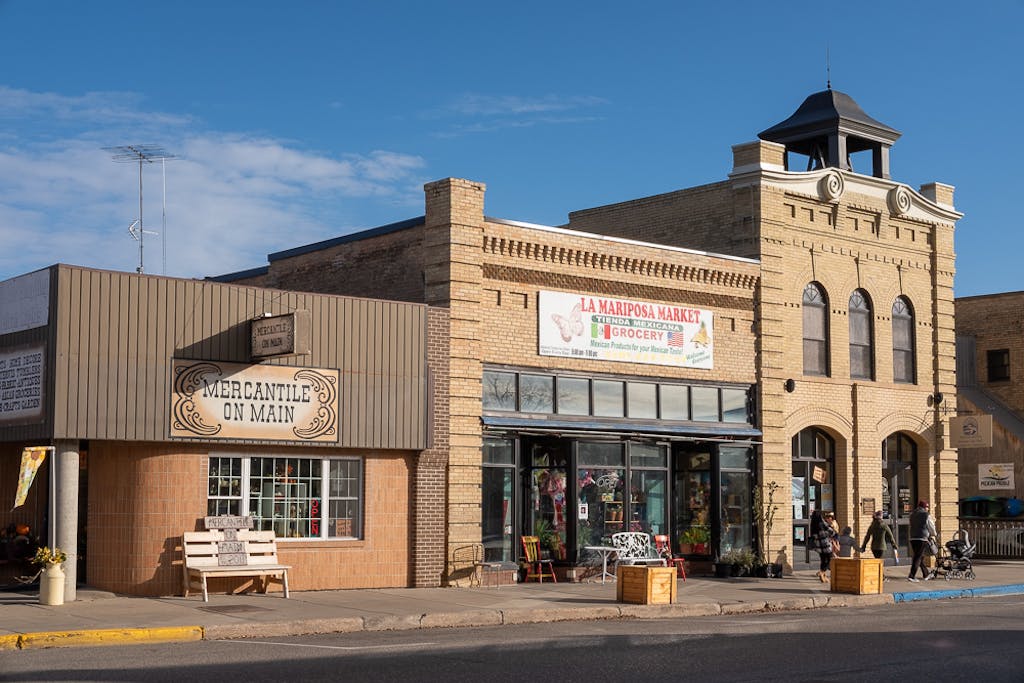
that is particularly essential in smaller cities with meatpacking crops, which regularly usher in immigrants from areas like Mexico and Latin America. in a single group of about three,000 people, there’s a mercado that carries an array of imported meals that is central to Latin American delicacies. We’ve additionally been in a place to assist start a neighborhood farmers market on the identical block the place it is biggest to buy latest, regionally grown meals to put together dinner Mexican dishes.
This method doesn’t simply current a method for these new residents to feed their households, earn money, and obtain expertise; there’s a therapeutic and cultural worth to rising and cooking your private meals and having a spot to share it. There’s a cascading influence that brings extra people into the general public sq.. It helps revive our primary streets and makes newcomers really feel extra welcome, all of which is extremely essential.
TP: It strikes me that every one of these initiatives current how sustainable enchancment highlights the interdependence of social, financial, and environmental dimensions that collectively are essential for healthful communities.
In that one event, you’re talking about financial alternative, meals safety, native meals methods, and likewise constructing connections between newcomers and longtime residents.
AW: precisely. And creating alternatives for them to see and be seen all by the group.
I spent a dozen years working group gardening initiatives inside the twin Cities, particularly centered on youngsters and new people. and thought of one of many issues i actually noticed all by which have was the biggest various to get people involved inside the environmental movement was to current them a method in. everyone can do one factor with reference to the environment. after which from there, they start to assemble alliances with people they might by no means have met. however all of them share a method of agency and accomplishments from rising their very personal meals and taking collective movement.
i like the idea of citizen-managed open areas — the parks, the gardens, the inexperienced areas in your environment. regardless of how metropolis or rural your hometown may even be, all of us have a likelihood and a responsibility to assist take care of it.
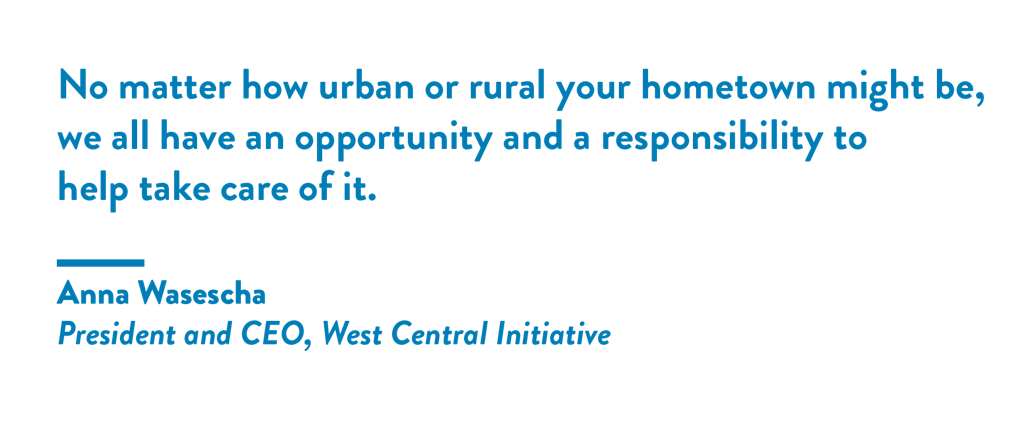
If the thought with the SDGs is to go away nobody behind, it’s solely when you look at these group areas and methods that you merely discover the causes why some are being left behind.
TP: i assume that’s thought of one of many good unstated truths when it includes the “Leaving nobody Behind” agenda, particularly inside the U.S. the place consciousness of the SDGs isn’t as extreme. If we’re actually actually going to go away nobody behind, it is important to interrupt by the methods which have put some people on the pores and skin pretty than on the inside.
when it includes constructing again elevated from COVID-19, what will get you excited with reference to the prospects? What energizes you about turning this disaster proper into a likelihood? And what worries you?
AW: i am particularly very obsessed with sustainable agriculture, which holds various potential for addressing a raft of the SDGs whereas additionally realigning and reenergizing rural economies. we’re in a place to develop issues in vastly elevated methods to shield the soil and the water.
Take the perennial grain crop recognized as Kernza, which was developed on the Land Institute in Kansas to shield and nourish the soil elevated than annual crops like corn and soybeans, which want to be replanted yearly. The college of Minnesota is now promoting discipline Pennycress as a cowl crop. There’s a lot of various methods in which we’re in a place to farm, even on an industrial scale. It’s going to take rather extra evaluation and enchancment, however we’re on the becoming path.
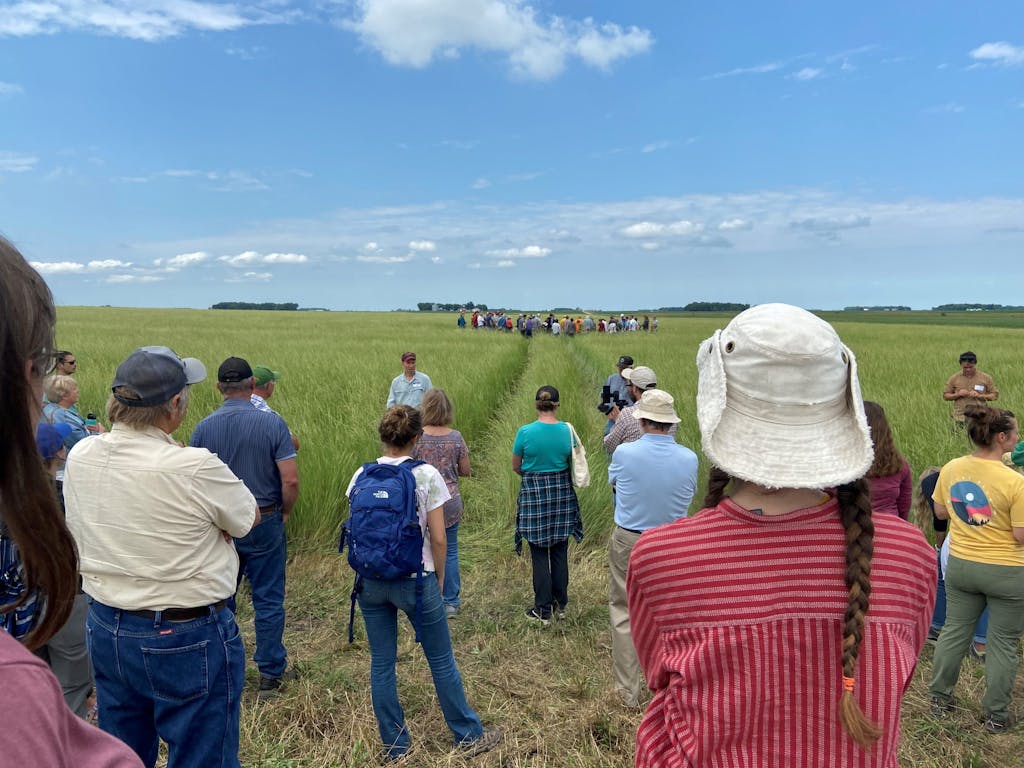
We’re getting the good majority of our latest produce from completely different areas that rely upon water gives which would possibly be shortly diminishing. So the nearer to residence you may even be — the “60-mile plate” as a end result of it’s typically recognized as — the extra sustainable our meals manufacturing could be. That native method additionally helps make use of people in our communities and construct the agricultural financial system. after which there’s bio-primarily based manufacturing and figuring out a various to monetize the worth of carbon sequestration in fields and in forests, after which paying farmers and land stewards for that.
All of this leads to a method of dignity and self-sufficiency whereas making elevated use of the assets we have in hand and taking a seventh-know-how view on it.
TP: the event you only laid out — about farmers being paid for carbon sequestration, after which being an component of the reply round local climate change as effectively as to sustainable agriculture — as quickly as extra actually highlights the interdependence and the intersections of the SDGs.
That was thought of one of many huge issues that distinguished the SDGs from earlier frameworks simply like the Millennium enchancment targets. We’re elevated at recognizing the connections and linkages. you presumably can create a single decision that addresses a quantity of factors with out delay, however you’d possibly as effectively inadvertently create a mannequin new drawback do you’d like to don’t contemplate the biggest method it’s all associated. We don’t want financial enchancment that ruins our environment, for event.
that is the rationale I’m fascinated by our dialog immediately. after i used to be sitting inside the UN primary meeting serving to develop these targets, we had been doing it on the behalf of nationwide governments. So our whole physique of reference was considering when it includes nationwide coverage interventions and the assets, and what’s underneath your jurisdictional administration as a nationwide authorities.

What i assume we’ve actually seen with the SDGs is the significance for all sectors of society to deal with these worldwide challenges collectively. And that native movement is as essential as nationwide or worldwide commitments.
AW: after which in any case all of this occurs in the direction of the backdrop of what actually goes on globally, simply like the speedy melting of the Antarctic shelf.
That’s why this idea that we have a decade left to discover these targets by 2030 is a solemn reminder of how pressing the work is.
We’ve acquired these markers — these 17 Sustainable enchancment targets — to anchor and information us. by these targets, we’re in a place to share knowledge and construct relationships with people we’ve by no means met in international areas we’ve by no means stepped foot in as a end result of we’ve all acquired this identical compass directing us.
Are we on the right track? The SDGs are our North Star.
Tony Pipa is a Senior Fellow on the Brookings institution’s coronary heart for Sustainable enchancment. In 2015, he led the U.S. delegation on the UN to barter and undertake the SDGs.
This dialog is an component of a a lot greater enterprise launched by the UN basis and the Brookings institution to assemble and assist American management on the SDGs.
enroll for our month-to-month publication to receive particulars about upcoming occasions, information, and tales that spotlight American management on the SDGs.
Featured photograph: West Central Initiative

